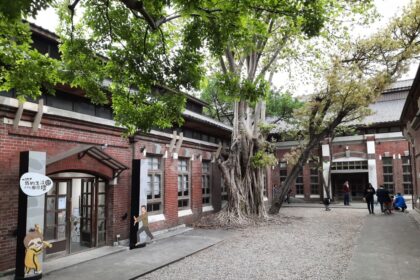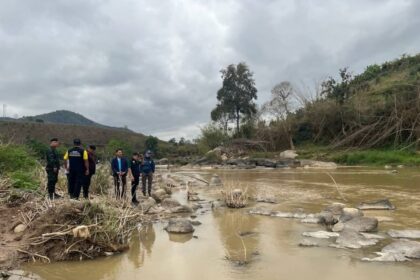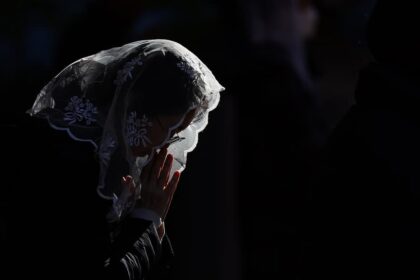Introduction: Okinawa’s Complex Relationship with the Military
Okinawa, Japan’s southernmost prefecture, has long been at the center of debates over military presence, national security, and the legacy of war. For decades, the island has hosted a disproportionate share of U.S. military bases, a situation rooted in the aftermath of World War II and the subsequent American occupation. Historically, many Okinawans, especially those who experienced the devastation of the Battle of Okinawa, have harbored strong anti-military sentiments. However, recent surveys and social trends indicate a significant shift in attitudes among younger generations, who are increasingly accepting of the military presence and even supportive of strengthening Japan’s Self-Defense Forces (SDF). This article explores the historical context, generational differences, and the factors driving this transformation.
- Introduction: Okinawa’s Complex Relationship with the Military
- The Legacy of the Battle of Okinawa
- Postwar Occupation and the U.S. Military Presence
- Generational Differences: A Shift in Attitudes
- Factors Driving the Change
- Ongoing Tensions and Unresolved Issues
- Voices from Okinawa: Perspectives Across Generations
- Historical Memory and the Challenge of Continuity
- In Summary
The Legacy of the Battle of Okinawa
The Battle of Okinawa in 1945 was one of the bloodiest campaigns of World War II, resulting in the deaths of over 200,000 people, including a large number of civilians. The trauma of the battle left deep scars on the local population. Survivors and their descendants have passed down stories of loss, hardship, and the horrors of war. For many years, these memories fueled strong opposition to any form of militarization on the island, whether by foreign or Japanese forces.
Personal accounts from survivors, such as those shared during peace gatherings at local schools, continue to highlight the suffering endured by Okinawans. For example, 91-year-old Tamaki Rieko, who lost her family during the battle, recalls wandering the battlefield alone and the lasting psychological impact of those experiences. Such testimonies have been central to peace education in Okinawa, aiming to ensure that the lessons of war are not forgotten.
Postwar Occupation and the U.S. Military Presence
After Japan’s defeat, Okinawa remained under U.S. administration until 1972, even as the rest of Japan regained sovereignty in 1952. During this period, the U.S. established numerous military bases across the island, often through forced land seizures. Even after reversion to Japanese control, about 70% of all U.S. military facilities in Japan remained concentrated in Okinawa, despite the prefecture accounting for only about 1% of the country’s land area and population.
This heavy military burden has been a source of ongoing tension. Incidents involving U.S. military personnel, including crimes and accidents, have periodically sparked protests and calls for base reductions or removal. Older generations, who directly experienced the war and its aftermath, have been particularly vocal in their opposition.
Generational Differences: A Shift in Attitudes
Recent surveys and academic research reveal a clear generational divide in attitudes toward the military in Okinawa. While older residents remain critical of the continued U.S. presence and wary of remilitarization, younger Okinawans are increasingly pragmatic or even supportive of the status quo.
Survey Data: Acceptance Among the Young
A 2022 public opinion survey conducted by Meisei University’s Professor Hiroyuki Kumamoto and colleagues found that among Okinawans aged 18 to 34, nearly half supported strengthening the SDF and the U.S.-Japan security alliance. Specifically, 47% of respondents in this age group favored a stronger SDF, compared to only 21% who opposed it. In contrast, among those aged 65 and older, only 24% supported strengthening the SDF, while 64% opposed it.
Similarly, when asked about the concentration of U.S. bases in Okinawa, only 28% of young respondents considered it “unfair,” compared to 64% of older respondents. Moreover, 55% of those under 34 said that anti-base protest movements were “meaningless,” reflecting a sense of resignation or acceptance of the current situation.
These findings are echoed in other surveys, such as the 2021 Ryukyu Shimpo poll, which showed that while a majority of older Okinawans still prioritized the base issue, younger generations were more likely to cite economic concerns as their top priority.
From Resistance to Resignation
Experts suggest that this shift is not necessarily a sign of enthusiasm for the military, but rather a pragmatic adaptation to reality. For many young Okinawans, the presence of bases is simply a fact of life. As one local official noted, “For the younger generation, bases are just part of the landscape. There’s no sense of discomfort.”
Professor Kumamoto explains that the generational gap is partly due to the fading of direct war memories. As the population ages, fewer people have personal or familial connections to the trauma of the Battle of Okinawa. Instead, younger people are more likely to view the base issue through the lens of job opportunities, economic stability, and national security concerns, especially amid rising tensions in East Asia.
Factors Driving the Change
Economic Realities
Okinawa remains one of Japan’s poorest prefectures, with lower average incomes and higher unemployment rates than the national average. For some, the bases provide stable employment and economic benefits, either directly through jobs or indirectly through related industries. The expansion of SDF facilities in the region has also created new job opportunities, making military service a more attractive option for young people.
According to the Ministry of Defense, the proportion of SDF recruits from Okinawa has been rising, surpassing 2% of all new recruits nationwide in 2023, despite Okinawa’s small population share. This trend reflects both the economic pull of military employment and the normalization of the SDF’s presence in local society.
Security Concerns and Geopolitics
Another factor influencing attitudes is the changing security environment in East Asia. The rise of China’s military power and increased tensions over Taiwan and the South China Sea have heightened concerns about Japan’s national defense. The Japanese government has responded by strengthening the SDF’s presence in the southwestern islands, including Okinawa, and by deepening security cooperation with the United States.
For younger Okinawans, who have grown up in a world where regional security threats are frequently discussed in the media, the idea of a strong SDF and continued U.S. presence is often seen as necessary for peace and stability. As one young SDF officer from Okinawa put it, “I want to fulfill my duty to protect the lives and property of the people.”
Changing Socialization and Education
The way Okinawans learn about the war and the base issue has also changed. While peace education remains a part of the school curriculum, opportunities for in-depth discussion and intergenerational dialogue have diminished. Some educators note that peace studies are not a formal subject, making it difficult to secure time and resources for comprehensive programs. As a result, many young people have less direct exposure to the stories and perspectives of war survivors.
At the same time, students from outside Okinawa who visit on school trips often arrive better informed about the island’s history, having studied it in advance. This contrast highlights a potential gap in local historical consciousness, as the lived experience of war becomes more distant.
Ongoing Tensions and Unresolved Issues
Despite the generational shift, the base issue remains contentious. Many older Okinawans continue to campaign for base reductions or removal, citing the disproportionate burden placed on the prefecture and the social problems associated with the military presence, such as crime and accidents involving U.S. personnel. Incidents of sexual violence and other crimes by U.S. servicemen have fueled anger and resentment, especially when they are perceived to be covered up or inadequately addressed by authorities.
There is also concern about the loss of historical memory and the potential for indifference to take root. As one peace educator warned, “If people grow up without a clear understanding of the issues, they may become adults who simply accept things as they are, without questioning or seeking change.”
Voices from Okinawa: Perspectives Across Generations
The diversity of opinion within Okinawa is reflected in the voices of its residents. Some, like the elderly survivors of the war, remain committed to passing on their experiences and advocating for peace. Others, particularly among the young, express a sense of resignation or focus on practical concerns.
Professor Hiroyuki Kumamoto of Meisei University, who led the 2022 survey, observes: “The perception of China’s military expansion as a threat has become widespread, especially among the younger generation, who tend to accept the current concentration of bases in Okinawa. As generational change progresses, this tendency is likely to strengthen further.”
Meanwhile, some young SDF members from Okinawa see their service as a way to contribute to society and bridge the gap between the military and local residents. One officer explained that, despite initial opposition from his grandparents who survived the war, he was eventually able to gain their support by sharing his experiences and motivations.
Historical Memory and the Challenge of Continuity
As the population of war survivors dwindles, the challenge of preserving and transmitting the lessons of Okinawa’s past becomes more acute. Peace activists and educators stress the importance of intergenerational dialogue and critical engagement with history. They warn that ignorance can lead to apathy, and apathy to the perpetuation of injustice.
At the same time, the realities of contemporary Okinawa—economic hardship, security concerns, and the normalization of the military presence—shape the perspectives of younger generations. The result is a complex and evolving landscape of opinion, in which the legacy of the past coexists with the demands of the present.
In Summary
- Okinawa’s history as the site of a devastating World War II battle and subsequent U.S. occupation has shaped strong anti-military sentiments, especially among older generations.
- Recent surveys show a significant generational shift, with younger Okinawans more accepting of the U.S. military presence and supportive of strengthening Japan’s Self-Defense Forces.
- Economic factors, security concerns, and changes in education contribute to this shift, as younger people view the base issue more pragmatically.
- Despite this trend, the base issue remains contentious, with ongoing protests and unresolved social problems linked to the military presence.
- The challenge of preserving historical memory and fostering critical engagement with the past is increasingly urgent as the population of war survivors declines.
- Okinawa’s experience highlights the complex interplay between history, security, and generational change in shaping public attitudes toward the military.












